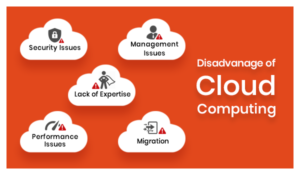
Table of Contents
What is cloud computing ?
Overall, cloud computing offers organizations increased agility, cost efficiency, scalability, and security, allowing them to focus on their core business activities and drive innovation.
Cloud computing is a model of computing that involves the delivery of on-demand computing resources over the internet. It enables users to access and utilize a variety of services, including servers, storage, databases, software applications, and networking, without needing to invest in and maintain physical infrastructure on their premises.
In a cloud computing environment, the underlying infrastructure, such as servers and data centers, is owned and maintained by a cloud service provider. Users can access and use these resources remotely via the internet, typically through a web browser or a specialized application interface.
Some of the key advantages include:
- Cost Savings: Cloud computing eliminates the need for upfront investments in hardware, infrastructure, and software licenses. Instead, users can pay for cloud services on a subscription or usage-based model, reducing capital expenditures. Additionally, the cloud allows for efficient resource allocation, enabling users to scale resources up or down as needed, thereby optimizing costs.
- Scalability and Flexibility: Cloud services provide elastic scalability, allowing users to easily increase or decrease resources based on demand. This flexibility is particularly beneficial for businesses experiencing fluctuating workloads or seasonal peaks, as they can scale up resources to handle increased activity and scale down when demand decreases. This agility enables organizations to respond quickly to changing business needs.
- Accessibility and Mobility: Cloud computing enables users to access their applications, data, and resources from anywhere with an internet connection. This accessibility promotes remote work, collaboration, and productivity across geographically dispersed teams. It also allows for seamless integration of different devices, such as laptops, tablets, and smartphones, enhancing mobility and user experience.
- Disaster Recovery and Business Continuity: Cloud service providers typically have robust disaster recovery mechanisms in place. They replicate data across multiple geographically diverse data centers, ensuring data redundancy and resilience. This helps organizations recover quickly from potential disasters, such as hardware failures, power outages, or natural disasters, without significant data loss or downtime.
- Automatic Updates and Maintenance: Cloud providers handle the responsibility of maintaining and updating the underlying infrastructure, including servers, security patches, and software upgrades. This relieves users from the burden of performing these tasks themselves, saving time and effort while ensuring that the services are running on the latest versions.
- Collaboration and Efficiency: Cloud computing enables real-time collaboration and file sharing among teams, regardless of their physical locations. Multiple users can work on the same document simultaneously, enhancing productivity and reducing version control issues. Cloud-based project management and communication tools further streamline workflows and foster efficient teamwork.
- Security and Data Protection: Cloud providers invest heavily in robust security measures to protect user data. They employ advanced encryption techniques, access controls, and security protocols to safeguard information from unauthorized access, data breaches, and other threats. Additionally, cloud infrastructure often includes automated backup and data replication features, ensuring data integrity and availability.
- Innovation and Time-to-Market: Cloud computing facilitates rapid deployment and experimentation, enabling organizations to quickly launch new applications or services. The cloud provides a scalable and on-demand platform for testing and development, reducing time-to-market for new initiatives. It fosters innovation by offering access to advanced technologies, such as artificial intelligence, machine learning, and big data analytics, without the need for significant upfront investments.
Disadvantages of Cloud Computing
While cloud computing offers numerous benefits, there are also some potential disadvantages to consider:
- Dependency on Internet Connectivity: Cloud computing relies heavily on internet connectivity. If there is an internet outage or a slow connection, it can disrupt access to cloud services and applications. Organizations with critical operations may face challenges if they rely solely on cloud-based solutions without backup contingency plans.
- Security and Privacy Concerns: Storing and processing data in the cloud raises security and privacy concerns. Organizations may be apprehensive about relinquishing control over their sensitive data to a third-party provider. Although cloud service providers implement robust security measures, there is always a small degree of risk associated with data breaches or unauthorized access.
- Limited Control and Customization: Cloud computing typically offers standardized services and configurations. Organizations may have limited control over the underlying infrastructure, software stack, or security policies. Customizing certain aspects of the cloud environment to align with specific requirements can be challenging or may require additional support from the provider.
- Vendor Lock-In: Migrating to the cloud often involves choosing a specific cloud service provider and adopting their proprietary technologies and APIs. Switching providers or transitioning back to an on-premises environment can be complex and costly. Organizations may face challenges if they want to change providers or integrate their cloud services with existing systems.
- Potential Downtime and Service Disruptions: Cloud service providers strive to offer high availability, but they are not immune to outages or service disruptions. Technical glitches, hardware failures, or human errors can lead to downtime, impacting business operations. It is important for organizations to consider service level agreements (SLAs) and the provider’s track record for reliability and disaster recovery.
- Cost Considerations: While cloud computing can lead to cost savings, it is not always the most cost-effective option for all scenarios. Depending on usage patterns and resource requirements, there are situations where on-premises infrastructure may be more cost-efficient. Organizations need to carefully analyze their usage patterns and compare the costs of cloud services versus in-house infrastructure.
- Compliance and Legal Considerations: Certain industries and regions have specific regulatory requirements regarding data privacy, protection, and residency. Compliance with such regulations can be complex when using cloud services, especially if the data is stored or processed across multiple jurisdictions. Organizations need to ensure that their cloud provider adheres to applicable regulations and provides necessary compliance controls.
It is important for organizations to evaluate these potential disadvantages alongside the benefits of cloud computing. Many challenges can be mitigated through careful planning, robust security measures, and selecting a reliable and reputable cloud service provider.


3 thoughts on “Advantage and Disadvantage of cloud Computing”